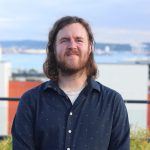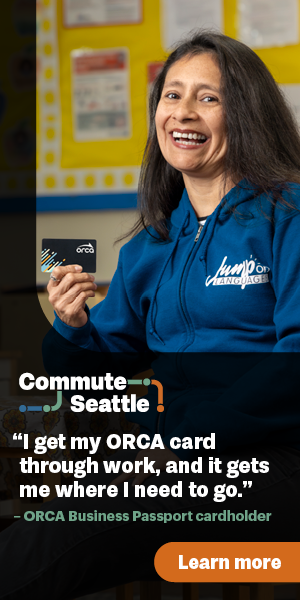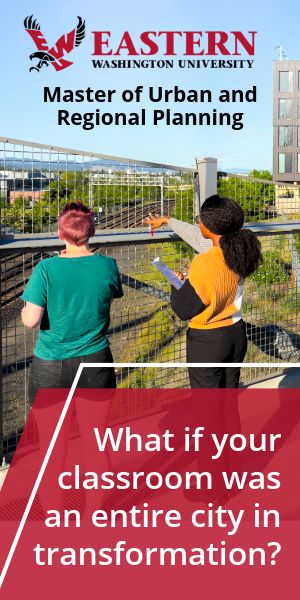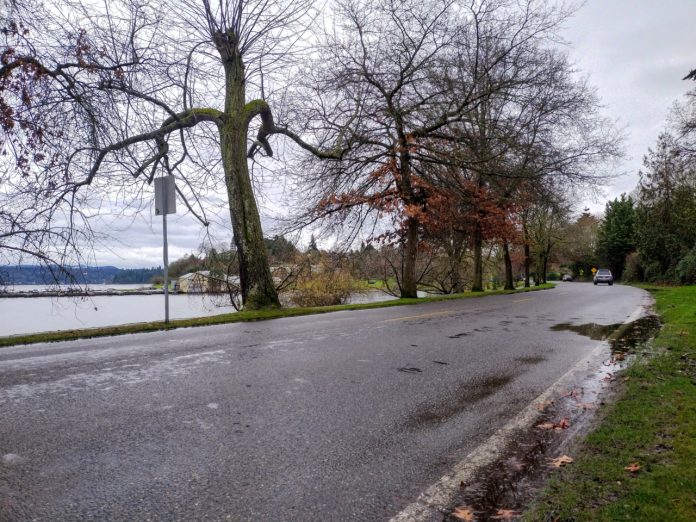
Last December, more than a hundred people packed into a crowded room upstairs at the Mount Baker Rowing Center to talk about Lake Washington Boulevard. In the weeks prior, Seattle Parks and Recreation had started implementing basic traffic calming infrastructure along the scenic corridor with the explicit intention of slowing vehicle traffic down and making the street safer and more inviting. The first phase of work had added 12 speed cushions, new marked pedestrian crossings, and other upgrades. A second phase of improvements was said to be coming in 2025.
The scheduling of that the December meeting in the first place had already been fueling speculation that the City was considering backing off that second phase, as opponents lobbied to maintain travel speeds on the street. The “project update” meeting had brought out high-level city staff, including Venu Nemani, the Chief Safety Officer at the Seattle Department of Transportation (SDOT), and SDOT’s Project Development Director Jim Curtin.
Even though the meeting lasted well over two hours, there were no concrete steps provided to attendees, further fueling the sense that the City was looking for a way out.
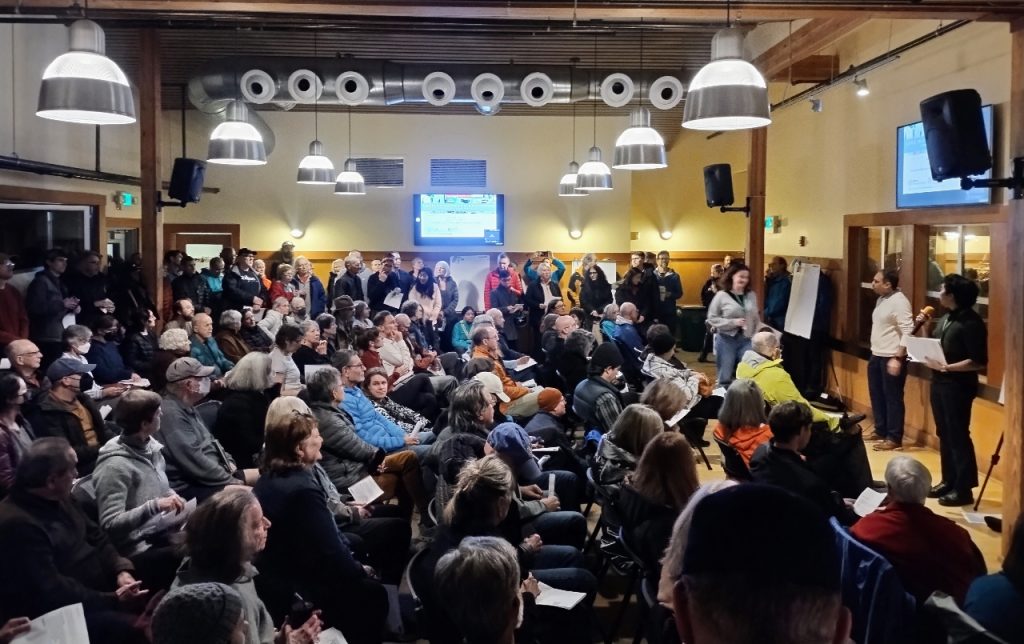
Six months later, those fears have been borne out: the promised second phase of traffic calming is unfinished, despite being funded by a state grant via the Transportation Improvement Board (TIB). Not only that, but there has been radio silence from Seattle Parks and Recreation. The project’s website hasn’t been updated since December, despite the fact that a Parks spokesperson told The Urbanist that month that a meeting summary and “reiteration of the second phase elements and construction timeline” would be posted by early 2025.
When The Urbanist reached out to Parks in late June to ask what was happening, the response didn’t shine any light on the situation. “We are working to have a press release and web update on this project by mid-July,” Parks communications manager Rachel Schulkin wrote.
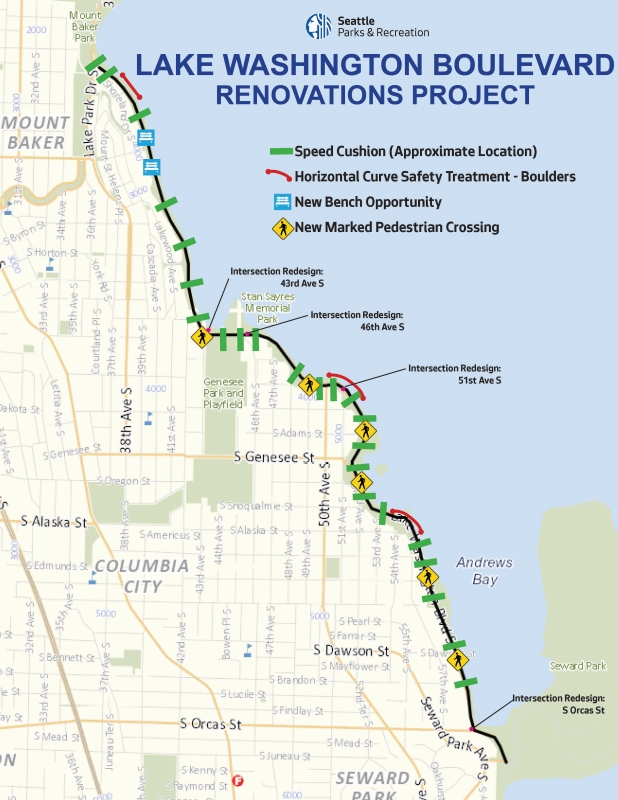
Traffic safety advocates are pushing for answers.
“[T]he project was left half completed, with another round of construction expected in February that we’re still waiting for. The funds are allocated, the design is approved, but where are the rest of the speed humps and stop signs?” reads a new action alert from Seattle Neighborhood Greenways calling for the full slate of changes to move forward. “The first half of the project has resulted in dramatically decreased dangerous speeding, but it has had no impact on the rest of the street, outside of that project zone. The safety improvements need to be completed now.”
The action alert is also pushing for an all-way stop sign at Mount Baker Beach to be added back into the plan, a feature that was dropped after project opponents met with Mayor Bruce Harrell’s office last year. Coexist Lake Washington, which has become the primary advocacy group pushing for Lake Washington Boulevard to remain in its current state, argued the stop sign “seeks to solve a problem that doesn’t exist,” despite nearby residents who have cited problems getting drivers to stop at the intersection and yield to pedestrians.
After a close-call collision involving a teenager near that intersection in mid-June, safety advocates turned up on a recent Saturday morning during a Bicycle Weekend, one of ten weekends where street closure signs seek to restrict through traffic along major parts of the boulevard from Seward Park to Mount Baker. In an attempt to show that the City isn’t doing enough to actually ensure drivers obey the street closure signs, they blocked entrances with their bodies.
The group also handed out flyers reading, “Tell Mayor Harrell: Finish the Damn Road!”
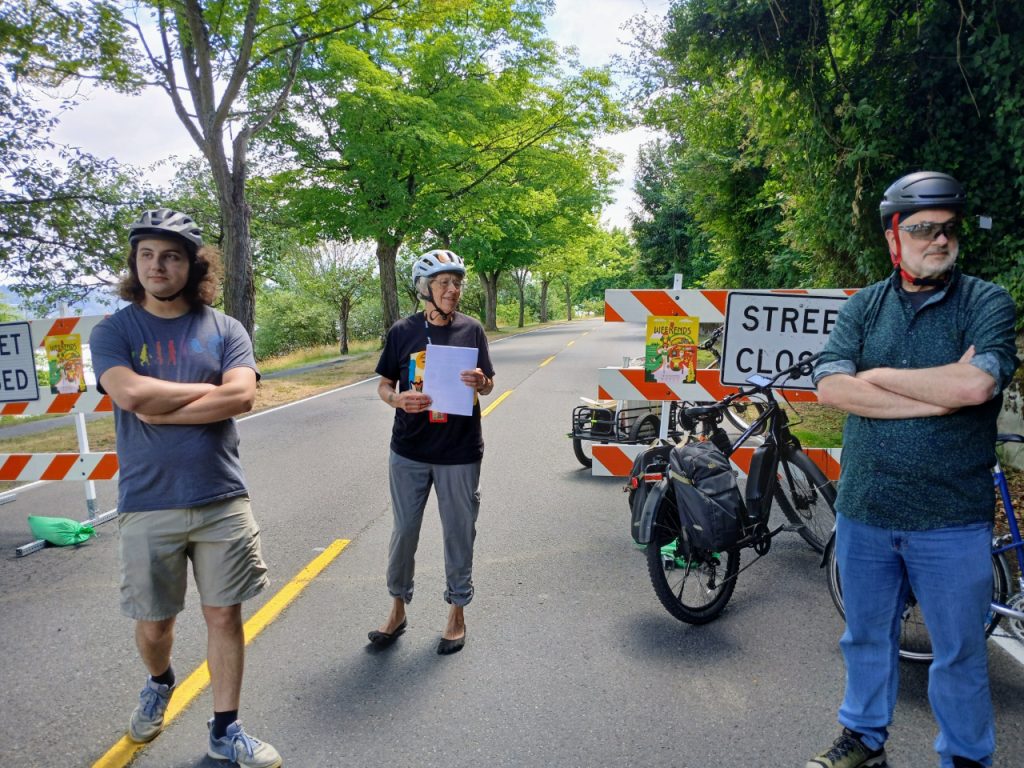
Just this weekend, another woman was sent to the hospital after being struck by a driver in a hit-and-run collision near Stan Sayres Park.
Traffic calming Lake Washington Boulevard was supposed to be the consensus position, after a taskforce made up of community members met for months to discuss the future of the street. They deadlocked on the issue of a potential repurposing of one of Lake Washington Boulevard’s two travel lanes to create a more accessible walking and biking path, and on redesignating the corridor as a non-arterial street, a move that would automatically lower the speed limit to 20 mph. But adding traffic calming infrastructure saw majority support, including from members of Coexist Lake Washington. Data shows the vast majority of drivers on the street are exceeding the 25 mph limit, a cut-and-dry case for adding calming.
“If there ever was a tempest in the teapot, this is it, and probably the number one disturbing thing is that we’re spending month after month with a less safe boulevard than it was planned to be,” Mount Baker resident Terry Holme, a member of the task force, told The Urbanist. “It’s always been a combination of the disappointment of delay, but the disappointment of the task force recommendations not being honored.”

Holme noted that Coexist Lake Washington has continued to push for elements of the traffic calming plan to be watered down, even after succeeding in blocking more ambitious ideas for Lake Washington Boulevard via the taskforce. The group has also called for a planned intersection redesign at S Orcas Street, near Seward Park, to be taken off the list of proposed changes.
“The group perspective, in part, was that we were respectful of not getting everything we wanted from the task force recommendation,” Holme said. “We have accepted the task force recommending as being the next step, and we’ve honored that, and the opposition has not honored that.”
Until the City of Seattle breaks the silence and provides an update as to what is happening with the second phase of minor traffic calming infrastructure, the Harrell Administration appears to have picked a side.
Ryan Packer has been writing for The Urbanist since 2015, and currently reports full-time as Contributing Editor. Their beats are transportation, land use, public space, traffic safety, and obscure community meetings. Packer has also reported for other regional outlets including BikePortland, Seattle Met, and PubliCola. They live in the Capitol Hill neighborhood of Seattle.


